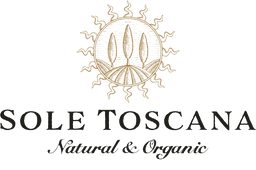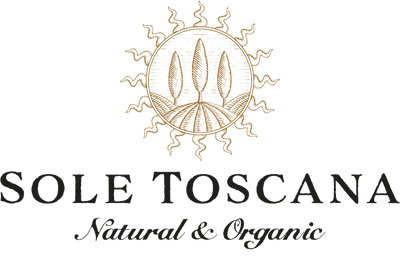Rosewater contains several antioxidants that help protect your skin from environmental stressors. It also improves mood, diminishes the appearance of redness, heals cuts, gives the skin a fresh look, and alleviates headaches.
Rosewater was used centuries ago by the ancient Romans, Greeks, and Phoenicians and later the Arabs, Persians, and people of European descent. It was first discovered in the 10th Century by a Persian Scientist named Avicenna. The Crusades brought rose water to Europe’s attention and made it a profitable source of trade for the Persians. In the Middle Ages, rose water was used to clean one’s hands before eating, and physicians prescribed it to prevent fainting, strengthen organs, and protect the heart.
When it was found to have healing properties, it was cultivated all over the world and used for religious ceremonies, fragrance, flavor, and even medicine. Rose water, or the “hydrosol” of the rose, is made by crushing and distilling rose petals to produce essential oil.
Skincare using rosewater
Summer is one of the best times to take advantage of this underrated beauty product. It will shield your skin from the effects of the sun, chlorine, salty water, and excessive sweating. Rose water is great for toning and hydrating the skin. It is safe and effective for all skin types and helps balance natural oil production. Rose water enhances circulation and encourages a clear, bright complexion.
Not all kinds of rosewater are equal- there are cheap imitations that contain synthetic ingredients.
To ensure you enjoy optimal benefits, here's how to make pure rosewater at home.
How to make good rosewater
The most vital point is to choose the correct type of petals.
How do you choose from over 100 different varieties of roses? Use these basic rules as a guide.
CHOOSING YOUR ROSE PETALS
- If you're buying roses, go for organic and pesticide-free varieties.
- If you have a rose garden, pick the buds early in the morning when they're most fragrant.
- You can also use pure Damask Rose dried petals.
- Once you're confident with selecting roses, add other dry ingredients if you wish. These include lavender and chamomile, which have a calming sensation on your skin.
Making DIY rosewater
Time: 30 minutes
Yield: 1.5 liters
Simmering method
This involves simmering dried or fresh rose petals in water. The resulting product has a short shelf life.
INGREDIENTS:
- 1 ½ cups distilled water
- Rose petals (¼ dried, ½-¾ cup fresh)
- Pot with lid
- Several layers of cheesecloth
- Dark spray bottle
INSTRUCTIONS:
- Add petals and water to the pot then bring to a boil while covered.
- Reduce temperature and simmer the mixture for 5-10 minutes or until the petals lose almost all their color.
- Remove from heat and allow the mixture to cool while covered in the pan.
- Pour the mixture through the cheesecloth and into the bottle. Store the product under refrigeration for several weeks.
Distillation method
Yields a more stable form of rosewater that lasts longer.
INGREDIENTS:
- Distilled water
- Rose Petals (1 ½ cups dried, 3-5 cups fresh)
- Ice
- Large pot with lid
- A clean brick or stone
- Dark spray bottle for storage
- Heat-tolerant bowl
INSTRUCTIONS:
- Place the brick in the middle of the pot then set the bowl on top.
- Sprinkle the rose petals evenly around the brick and bowl but not inside.
- Pour distilled water over the petals until it covers the brick.
- To distill, place the lid of the pot in an inverted fashion. The steam will collect at the top and drop into the bowl.
- Place ice on the lid to make the steam condense more quickly.
- Boil the water gently.
- Simmer for 20 minutes on low heat.
- Allow the mixture to cool then remove the lid.
- Pour the rosewater that's in the bowl into your spray bottle.
- The product lasts up to six months stored in the refrigerator.
Other DIY rosewater uses
Here are some additional ways to use your rosewater.
SUNBURN RELIEF
Sometimes sunburn occurs even if you're wearing sunscreen.
Mix equal amounts of apple cider vinegar with the rosewater mixture into a spray bottle. Store in the fridge for added skin relief.
TONER
Use this recipe for a quick DIY toner. Add 5-8 drops of essential oils such as lavender or chamomile (soothing), geranium (suitable for all skin types), sweet orange (antiseptic), or carrot seed or patchouli oil.
Just like pure rosewater, you can use this mixture to set your makeup.
HAIR REFRESHER
Are your strands starting to smell musty, but you're running short on time for a shampoo session? Make a hair mist by mixing 25-30 drops of various essential oils (rosemary, ylang ylang, patchouli, lavender, etc.) with one teaspoon of vanilla extract in a 4-ounce dark glass spray bottle. Add some rosewater and store it in the fridge. Shake well before use.

HYDRATING BATH
Add 1-2 cups of rosewater to your bath for both relaxing and hydrating home spa treatment. Add some Epsom salts to relax muscles, encourage sleep, and soothe any pains.
FLAVOR ENHANCER
Countries like Turkey and Morocco add rosewater to their recipes to boost flavors. Add some drops to your fruit salad, tea, yogurt, pudding, and pastries before baking. Many food recipes from China, India, and the Middle East also use rose water. It adds a pleasant flavor to syrups and jellies and can even be sprinkled over rice, puddings, and cakes.
If you've never made rosewater before, we recommend starting with the simmering method.
When you move to distilling, make sure you have enough time, so you don't rush the process. Once you start incorporating rosewater into your life, it quickly becomes a favorite!
With love,
The Sole Toscana Beauty Team


